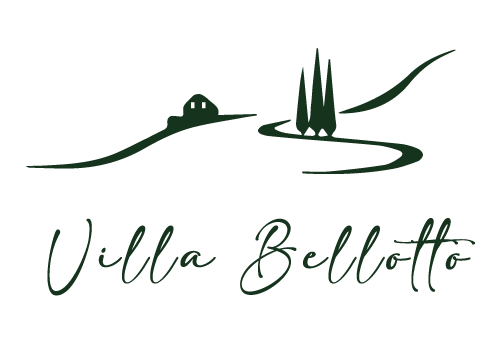What is Scrumban? Definition, Examples and Limits
It was created for teams who want to start using a pull-based system instead of batch work. A pull-based system means that you’re only starting new work when there is demand, or pull, for it. Kanban is a visual development method to control and manage workflow. It uses boards that show task-related cards to quickly see all outstanding work, work in progress, and completed work.
- Scrumban only works if the team it’s deployed in has some degree of control over their workload and/or the items involved in it.
- A solution like Teamhood will offer you all the traditional Agile features as well as other project management tools like a Gantt chart and Project Portfolio management.
- There are hard set limits for the amount of tasks that are currently in progress to prevent the team from being overworked.
- With Scrum, a team organizes itself into specific roles, including a Scrum master, product owner, and the rest of the Scrum team.
- The goal here is to test out the result and gather comments to improve results in the next cycle.
- It’s a good fit for marketing teams, support, and manufacturing.
They only need to be sufficient to avoid misunderstanding between producers and consumers. These standards are themselves made and owned by the team, and they can change them as necessary according the practice of kaizen, or continuous improvement. Putting them in a soft medium like a whiteboard or a wiki reinforces the notion of team ownership. Frameworks and methods are for teams, not the other way around.
What Is the Difference Between Kanban and Scrumban?
Demand planning simply refers to a planning meeting that occurs every time the number of tasks to be done gets below a certain number. The Scrumban definition usually begins by stating that it is a portmanteau of Scrum and Kanban. The Scrumban meaning in project management therefore is close to other agile project management definitions. Scrumban is a hybrid of Scrum and Kanban – a mixture of Scrum’s ceremonies, with Kanban’s visualization, WIP limits, pull system, and continuous flow. A combination like this is particularly useful for companies transitioning from Scrum to Kanban, or those that have never tried Agile but are interested in moving to a pull workflow. Team members can take turns running the daily standup meeting.
How that is represented in a transaction is mostly incidental. For example, introduce a ‘Ready’ section in the ‘To-Do column’ so the tickets are not pushed from the ‘To-Do’ section but pulled from the ‘Ready’ column. It could be a physical board or an online board (Kanban board can be easily tweaked, with additional columns added to the mix like ‘Dev,’ ‘Ready to Test,’ and ‘Test’).
What Is Kanban?
The backlog should reflect the current understanding of business circumstances as often as possible, which is to say, the backlog should be event-driven. Since our system already demonstrates pull and flow, that increased responsiveness should come at no cost to our current efficiency. The first step beyond Scrum is to decouple the planning and release periods.
Kanban is represented as boards used by organizational teams to visualize the workflow and the progress of the projects. Scrum teams are responsible for breaking the work into small manageable tasks on a priority basis. Its main objective is to complete the goals the product owner sets within the fixed-length development cycles.
How does Scrumban combine Scrum and Kanban?
Here, one will list all the functions the product promises to achieve and all the requirements needed for the project. New requirements, however, can still be added later, as this is an agile approach after all. These are primarily the freedom from the strict time-boxed iterations and sprint planning of Scrum with the flexibility of the pull system from Kanban. Around the same time, the Certified Scrumban Practitioner came out, a guide that defines Scrumban elements like the rules and roles of Scrumban. Scrum revolves around a set of scrum ceremonies, including sprint planning, daily scrum, sprint review, retrospective, and backlog refinement.

It takes a lot of the basics from the Kanban board, and adds a few extra elements that make it an improved version of the more simple Kanban system. LogRocket identifies friction points in the user experience so you can make informed decisions about product and design changes that must happen to hit your goals. Tasks are visually represented as cards that move through different stages of the process on a Kanban board. All of these things started as two separate entities that combined to create something completely new.
Scrumban In Agile Software Development In 2022
Kanban is better for tasks that can be completed without dependencies on other tasks. You can use this method when the speed to market is the number one priority. In Scrum, the performance metric is velocity whereas in Scrumban it’s the average cycle time and lead time. https://www.globalcloudteam.com/what-is-scrumban-things-you-should-know-about-scrum-kanban-hybrid/ Velocity simply measures the amount of work a team can deliver during a Sprint and cycle time tells us how much is needed to move the task through different parts of the process . Lead time refers to the overall time needed to complete the task from the ‘To-Do’ list.

Restricting work items in this way ensures each task is finished before a new one is taken on. This gives the team an opportunity to easily spot and solve issues immediately. It also guarantees a constant flow of work and gives a better chance for project estimations.
free project management templates (for Excel and Google…
By integrating pull-based practices , teams start planning based on incoming demand. Furthermore, due to embracing flow metrics, Scrumban teams rely on historical data to make predictions. This allows them to save a lot of time on estimating the size of individual work items. Another key concept of Scrumban is to start managing flow within iterations.

As Scrumban aims to move a Scrum team to Kanban, both approaches are suitable for longer-term projects that require ongoing maintenance. Unlike Scrumban, where teams still have a predefined process , Kanban offers an entirely tailor-made approach. This enables teams to evolve their current work management systems and achieve company-wide agility. Scrumban is a fairly new agile project management methodology that is a hybrid of Scrum and Kanban. And since the basic principles of Scrumban are permitting, some teams may decide to invent on their own.
How to Use Kanban and Scrum?
Understanding the visual board, its elements and the Scrumban method are the first steps. If you’ve ever worked as a project manager you may be familiar with at least some of the commonly used project management methodologies or Agile methodologies https://www.globalcloudteam.com/ like Scrum or Kanban. Working with top-notch CRM project management software, you can apply Scrumban for in-office, distributed, and remote teams alike. This process begins with building your project team and creating a product backlog.
